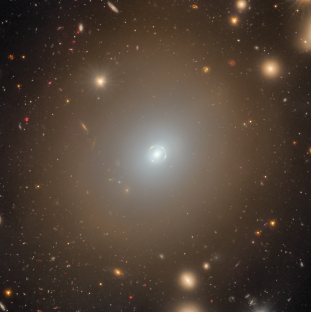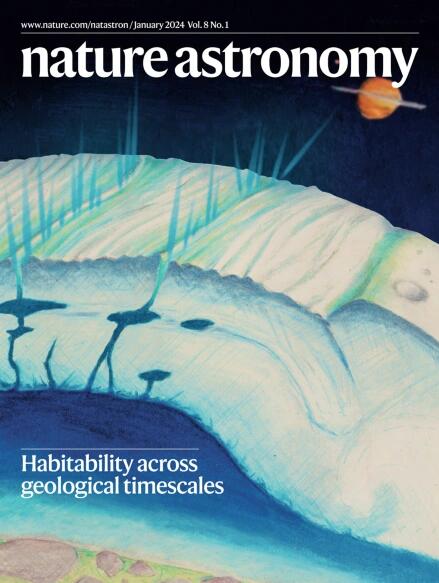欧几里得强透镜发现的革命
IF 14.3
1区 物理与天体物理
Q1 ASTRONOMY & ASTROPHYSICS
引用次数: 0
摘要
强引力透镜为暗物质、星系演化和宇宙学提供了一个强大而直接的探测,然而强透镜是罕见的:大约10000个大质量星系中只有1个可以将背景源透镜成多个图像。欧洲航天局的欧几里得望远镜,以其独特的高分辨率成像和广域天空覆盖的组合,将改变这一领域。在第一次快速发布的数据中,仅覆盖了整个调查区域的0.45%,通过机器学习、公民科学和专家视觉检查的协同作用,已经确定了大约500个高质量的强透镜候选者。该数据集包括复合透镜和边缘圆盘透镜等奇异系统,展示了欧几里得探测透镜参数空间的能力。为在欧几里得数据中发现强透镜而开发的机器学习模型能够找到高纯度的透镜,这证实了该任务在6年任务期间发现超过10万个强透镜的预测是可以实现的。这将使已知的强透镜的数量增加两个数量级,从而改变可以用强透镜完成的科学。本文章由计算机程序翻译,如有差异,请以英文原文为准。


The revolution in strong lensing discoveries from Euclid
Strong gravitational lensing offers a powerful and direct probe of dark matter, galaxy evolution and cosmology, yet strong lenses are rare: only 1 in roughly 10,000 massive galaxies can lens a background source into multiple images. The European Space Agency’s Euclid telescope, with its unique combination of high-resolution imaging and wide-area sky coverage, is set to transform this field. In its first quick data release, covering just 0.45% of the full survey area, around 500 high-quality strong lens candidates have been identified using a synergy of machine learning, citizen science and expert visual inspection. This dataset includes exotic systems such as compound lenses and edge-on disk lenses, demonstrating Euclid’s capacity to probe the lens parameter space. The machine learning models developed to discover strong lenses in Euclid data are able to find lenses with high purity rates, confirming that the mission’s forecast of discovering over 100,000 strong lenses is achievable during its 6-year mission. This will increase the number of known strong lenses by two orders of magnitude, transforming the science that can be done with strong lensing. The application of state-of-the-art machine learning algorithms to Euclid’s first quick data release has enabled the discovery of around 500 new strong gravitational lenses, validating predictions that next-generation surveys will substantially extend the reach of strong lensing science.
求助全文
通过发布文献求助,成功后即可免费获取论文全文。
去求助
来源期刊

Nature Astronomy
Physics and Astronomy-Astronomy and Astrophysics
CiteScore
19.50
自引率
2.80%
发文量
252
期刊介绍:
Nature Astronomy, the oldest science, has played a significant role in the history of Nature. Throughout the years, pioneering discoveries such as the first quasar, exoplanet, and understanding of spiral nebulae have been reported in the journal. With the introduction of Nature Astronomy, the field now receives expanded coverage, welcoming research in astronomy, astrophysics, and planetary science. The primary objective is to encourage closer collaboration among researchers in these related areas.
Similar to other journals under the Nature brand, Nature Astronomy boasts a devoted team of professional editors, ensuring fairness and rigorous peer-review processes. The journal maintains high standards in copy-editing and production, ensuring timely publication and editorial independence.
In addition to original research, Nature Astronomy publishes a wide range of content, including Comments, Reviews, News and Views, Features, and Correspondence. This diverse collection covers various disciplines within astronomy and includes contributions from a diverse range of voices.
 求助内容:
求助内容: 应助结果提醒方式:
应助结果提醒方式:


